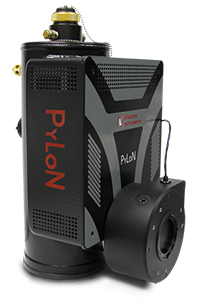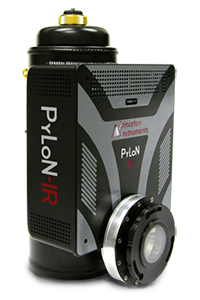PyLoN® FamilyExtremely Low Noise Liquid Nitrogen Cooled Cameras
Extremely Low Noise Liquid Nitrogen Cooled CCD and InGaAS Cameras

PyLoN®
- 120 – 1100 nm sensitivity
- -120℃ cryogenic cooling
- 50 kHz – 4 MHz readout speeds
- Ultra low noise
PyLoN® supports a range of cryogenically cooled CCDs with flexible readout design and 120-1100 nm sensitivity.

PyLoN® IR
- 800 – 2200 nm spectral coverage
- -100℃ cryogenic cooling
- 6600 spectra/sec
- 16-bit digitization
- 1024 x 1 pixels linear InGaAs array
The PyLoN® IR offers high-performance NIR/SWIR spectroscopy with a cryogenically cooled InGaAs detector with fast spectral rate and lowest system read noise.